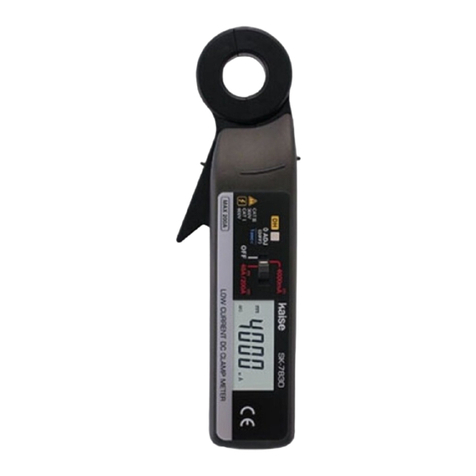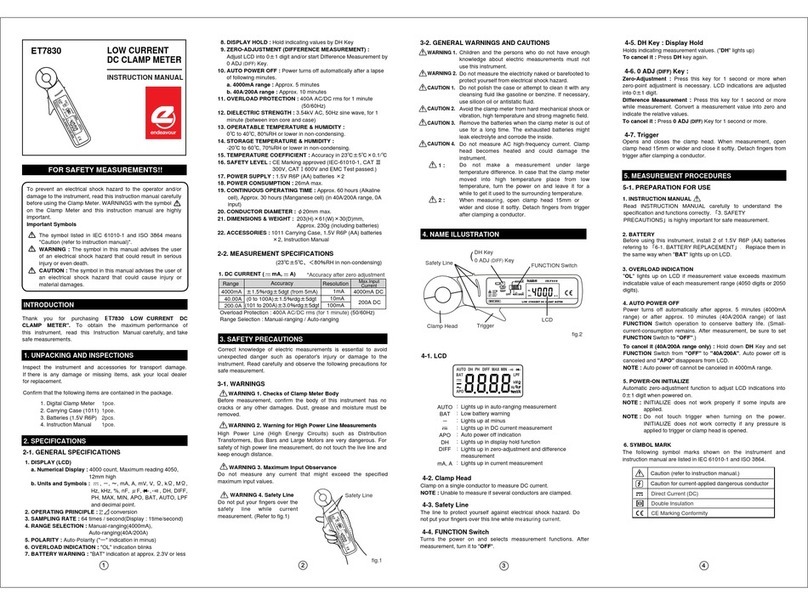
Do not use the accessories with other instruments/equipments.
Heat, burst, fire of the instrument, or injury, electric shock may occur.
Do not drop or shock the instrument and the accessories.
Heat, burst, fire of the instrument, or injury, electric shock may occur.
Keep away from re when using / recharging the instrument.
Heat, burst, fire of the instrument, or injury, electric shock may occur.
Keep away ammable objects when using / recharging the instrument.
Heat, burst, fire of the instrument, or injury, electric shock may occur.
Do not leave the instrument in the engine compartment.
Heat, burst, fire of the instrument, or injury, electric shock may occur.
Do not use any cables except for the supplied ones.
Heat, burst, fire of the instrument, or injury, electric shock may occur.
Do not take long-time continuous measurement.
Heat, burst, fire of the instrument, or injury, electric shock may occur.
4
Store the instrument in the place less than 45℃and 70% humidity.
Avoid direct-sunlight and/or inside the sun-heated vehicle.
Heat, burst, fire of the instrument, or injury, electric shock may occur.
Do not attempt to disassemble or modify the instrument.
Heat, burst, fire of the instrument, or injury, electric shock may occur.
Do no use the cables with its insulation coating damaged.
Heat, burst, fire of the instrument, or injury, electric shock may occur.
Do not put the instrument into re or water. Do not attempt to heat.
Heat, burst, fire of the instrument, or injury, electric shock may occur.
Do not put the instrument close to the hot apparatus.
Heat, burst, fire of the instrument, or injury, electric shock may occur.
Do not bind the cables when using.
Heat, burst, fire of the instrument, or injury, electric shock may occur.
SAFETY PRECAUTIONS (strict observance is required)
WARNING
































